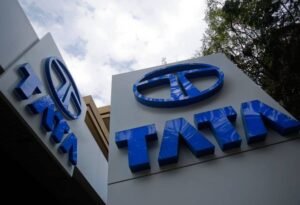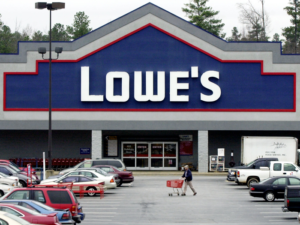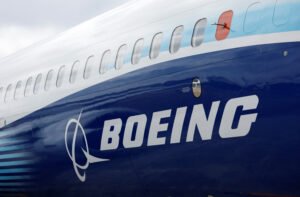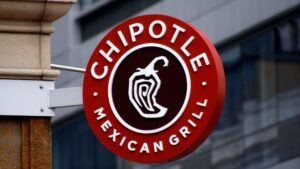Did you know that McDonald’s, the iconic fast-food chain, operates in a staggering 118 countries? This global giant has captured the hearts and appetites of millions, making it the largest fast-food chain in the world. With its solid financial position and a revenue of $21.98 billion in 2019, McDonald’s continues to dominate the industry. But what lies beneath its success? In this article, we will delve into a comprehensive SWOT analysis of McDonald’s, examining its strengths, weaknesses, opportunities, and threats. Brace yourself for an insightful journey into the inner workings of this fast-food powerhouse.
Jump Ahead To :
Key Takeaways:
- McDonald’s has a strong global franchise presence in 118 countries.
- The company boasts a solid financial position with a revenue of $21.98 billion in 2019.
- Despite intense competition, McDonald’s has managed to increase its market share.
- Challenges lie in its franchising business model and imbalanced meal options.
- Opportunities for growth include expansion in Asian markets and investment in technology.
- Competitors of McDonalds include Jollibee , Burger King , Wendys , KFC , Popeyes , Chick Fil A & Dairy Queen
McDonald’s Strengths
McDonald’s, a renowned fast-food franchise, boasts a strong global presence with its operations spanning across 118 countries. Recognized for its delectable fast food offerings, the brand has established an expansive global footprint that enables the implementation of its innovative ideas at a local level. With a solid financial position, McDonald’s has consistently strengthened its market share, emerging as a dominant player in the industry. In 2019 alone, the company reported a staggering revenue of $21.98 billion, securing an approximate market share of 19%.
| Strengths | Description |
|---|---|
| Global Franchise Presence | McDonald’s has a strong global presence and operates in 118 countries. |
| Expansive Global Footprint | The brand’s extensive global footprint enables the implementation of global ideas at a local level. |
| Solid Financial Position | With a revenue of $21.98 billion in 2019, McDonald’s boasts a strong financial position. |
| Increasing Market Share | McDonald’s has steadily strengthened its market share, consistently outperforming competitors. |
McDonald’s strengths are key contributors to its success in the fast-food industry, positioning the brand as a reliable and dominant force amidst intense competition. Its global franchise presence, expansive footprint, robust financials, and growing market share bolster its position as an industry leader.

McDonald’s Weaknesses
McDonald’s, despite its global success, is not without its weaknesses. One prominent weakness lies in its franchise business model, which presents both benefits and challenges. Despite the financial advantages of franchising, such as shared investment and operational costs, McDonald’s faces difficulties in maintaining control over daily operations and ensuring consistent quality across its network of franchisees.
Furthermore, McDonald’s operates in a highly competitive industry, facing fierce competition from other fast-food brands. With competitors constantly innovating and seeking to attract customers, McDonald’s must remain vigilant to retain and regain market share.
One of the primary weaknesses of McDonald’s lies in its imbalanced meals. Although the company has made efforts to align its menu with nutritional guidelines, it continues to face criticism for offering food options that lack nutritional diversity and contribute to unhealthy eating habits.
“In order to thrive in an increasingly health-conscious society, McDonald’s must address the issue of imbalanced meals and offer more diverse and nutritious food choices.”
To counter these weaknesses, McDonald’s must develop strategies that address the challenges posed by its franchise business model, confront fierce competition, and adapt to changing consumer preferences.
| Weaknesses | Impact |
|---|---|
| Franchise Business Model | Lack of control over daily performance, inconsistent quality |
| Fierce Competition | Loss of customers, potential decline in market share |
| Imbalanced Meals | Criticism, negative impact on brand image |
McDonald’s Opportunities
McDonald’s, the world’s largest fast-food chain, has significant opportunities for further global expansion. One particular area of focus is the Asian markets, which offer immense potential for growth. By developing its presence in these markets, McDonald’s can tap into a large customer base and increase its revenue. This expansion can be achieved through strategic partnerships, franchise agreements, and localization efforts that cater to the cultural preferences and tastes of Asian consumers.
In addition to geographical expansion, McDonald’s also has the opportunity to invest in technology to enhance the customer experience. By leveraging digital platforms and personalized marketing strategies, the company can engage with customers on a more personal level and create a seamless ordering and dining experience. This can include features such as mobile ordering, customized recommendations, and loyalty programs that reward customer loyalty.
Furthermore, McDonald’s can leverage its strong brand presence to explore new business models and ventures. For instance, the company can venture into food delivery services, ghost kitchens, or even plant-based options to cater to changing consumer preferences and trends. By continually innovating and adapting, McDonald’s can stay ahead of the competition and maintain its position as a leader in the fast-food industry.
“Expanding into Asian markets and investing in technology are key opportunities for McDonald’s to drive growth and enhance the customer experience. By understanding the unique needs and preferences of Asian consumers and leveraging digital platforms, McDonald’s can strengthen its position and remain relevant in today’s dynamic business environment.”

McDonald’s Threats
McDonald’s, the global fast-food chain, faces several threats that could impact its business operations and profitability.
- High-risk technological investments: McDonald’s may encounter challenges and risks associated with investing in new technologies. While technological advancements can enhance operational efficiency and customer experience, there is no guarantee that the benefits will align with expectations. Moreover, the implementation and integration of new technologies may pose unforeseen difficulties.
- Intense competition: In the highly competitive fast-food industry, McDonald’s faces consistent pressure from rival brands aiming to attract its customer base. These competing brands employ aggressive marketing strategies and innovative menu offerings to capture market share and draw customers away from McDonald’s.
- Economic downturn: McDonald’s is not immune to the effects of economic downturns. During periods of reduced consumer spending and economic instability, customers may prioritize cost-saving measures and reduce discretionary spending on dining out. This can lead to decreased foot traffic, lower sales, and diminished profitability for McDonald’s. Additionally, economic downturns can negatively impact consumer engagement and loyalty with the brand.
Being aware of these threats allows McDonald’s to proactively address them and develop strategies to mitigate their impact on the business. By carefully evaluating high-risk technological investments, staying ahead of the competition, and adapting to changing economic conditions, McDonald’s can maintain its market position and sustain its success in the fast-food industry.
McDonald’s SWOT Analysis Mindmap
McDonald’s can use a SWOT analysis, which stands for strengths, weaknesses, opportunities, and threats, as a strategic planning framework to assess its internal and external factors. This analysis helps McDonald’s identify its strengths and weaknesses within the organization, as well as the opportunities and threats it faces in the market.
By evaluating its internal strengths and weaknesses, McDonald’s can determine areas in which it excels and areas that need improvement. This self-assessment enables McDonald’s to leverage its strengths to gain a competitive advantage and address its weaknesses to maintain a strong position in the market.
The SWOT analysis also allows McDonald’s to identify external opportunities and threats that may impact its business. By recognizing opportunities, such as expanding into new markets or investing in technology, McDonald’s can develop strategies to capitalize on these factors. Meanwhile, by understanding threats, such as intense competition or economic downturns, McDonald’s can implement measures to mitigate potential risks.
This comprehensive analysis helps McDonald’s make informed decisions and optimize its business planning and strategic analysis processes. With a clear understanding of its internal and external factors, McDonald’s can align its business strategies with its strengths, capitalize on opportunities, and navigate challenges.
Key Takeaways
McDonald’s, founded in 1940, has experienced rapid expansion, establishing itself as the world’s largest fast-food chain. With a strong financial foundation and a high market share, McDonald’s has become a dominant force in the industry. The company’s commitment to technology investments has driven innovation and enhanced the customer experience. However, McDonald’s faces challenges with its franchise business model, intense competition, and evolving consumer preferences.
One key takeaway from McDonald’s success is its rapid expansion. Since its humble beginnings, the company has grown exponentially, establishing a global presence in 118 countries. This extensive network of restaurants allows McDonald’s to cater to diverse consumer needs on a local level, while maintaining a consistent brand experience.
Another important factor contributing to McDonald’s success is its strategic investments in technology. By embracing digital platforms and personalized marketing, McDonald’s has been able to connect with its customers in new ways and stay ahead of the competition. This ongoing commitment to technology ensures that McDonald’s remains relevant and adapts to the changing demands of today’s consumers.
Market segmentation is another key takeaway from McDonald’s success. The company has effectively identified and targeted various consumer segments, offering menu options and promotions tailored to their preferences. Whether it’s the value menu for price-conscious customers or healthier options for health-conscious individuals, McDonald’s understands the importance of catering to different consumer needs and preferences.
However, McDonald’s also faces challenges in its franchise business model. While franchising allows for rapid growth and global expansion, it also poses risks in terms of maintaining consistent quality and control over daily operations. The success of each franchise location relies heavily on the franchisees’ ability to adhere to McDonald’s standards, which can sometimes lead to inconsistencies in service and customer experience.
In addition, McDonald’s operates in a fiercely competitive industry, facing competition from both traditional fast-food chains and emerging players. To maintain its market share, McDonald’s must continue to innovate and differentiate itself from its competitors, offering unique menu offerings and experiences that set it apart.
Moreover, changing consumer preferences and a growing focus on healthier eating habits pose additional challenges for McDonald’s. While the company has made efforts to adapt its menu and offer healthier alternatives, there is a constant need to stay ahead of evolving consumer trends and ensure that the brand remains relevant and attractive to health-conscious consumers.
In summary, McDonald’s key takeaways from its journey to becoming a global fast-food giant include rapid expansion, strategic technology investments, effective market segmentation, challenges in its franchise business model, intense competition, and evolving consumer preferences. By understanding and addressing these factors, McDonald’s can continue to thrive in the dynamic and competitive fast-food industry.

Understanding McDonald’s Target Market
In understanding the target market for McDonald’s, it is crucial to delve into the buyer persona that the brand caters to. McDonald’s appeals to a wide range of customers, with a particular focus on students and young adults.
Young adults, primarily in the age group of 18 to 34, form a significant portion of McDonald’s customer base. These individuals value convenience, affordability, and speed when it comes to their food choices. They often have busy lifestyles, limited time, and a desire for quick and readily available meals.
Additionally, the buyer persona for McDonald’s appreciates the variety of food options offered by the brand. Whether it is a classic Big Mac or a healthier option like a salad, McDonald’s aims to provide a range of choices to suit different tastes and dietary preferences. This variety ensures that the brand can cater to a diverse customer base and appeal to a wide range of individuals.
Furthermore, the buyer persona values the friendly ambiance that McDonald’s creates in its restaurants. With a focus on creating an inviting atmosphere, McDonald’s aims to provide a comfortable space for customers to enjoy their meals and socialize with friends and family. This friendly ambiance adds to the overall experience of dining at McDonald’s and enhances customer satisfaction.
Key characteristics of the McDonald’s buyer persona:
- Students and young adults
- Value convenience and affordability
- Appreciate a variety of food options
- Desire a friendly ambiance
Understanding this buyer persona is crucial for McDonald’s as it allows the brand to tailor its marketing strategies and offerings to meet the specific needs and preferences of its target customers. By catering to the buyer persona, McDonald’s can continue to thrive as a fast-food giant and maintain its position as a top choice for consumers.
| Buyer Persona | Key Characteristics |
|---|---|
| Students and young adults | Value convenience and affordability |
| Appreciate a variety of food options | |
| Desire a friendly ambiance |
Conclusion
McDonald’s SWOT analysis highlights the company’s strengths, weaknesses, opportunities, and threats. Despite the challenges it faces, McDonald’s remains a dominant force in the fast-food industry. With its global franchise presence, solid financial position, and substantial market share, McDonald’s has established itself as a leader in the market.
The strengths of McDonald’s, such as its extensive global footprint and strong financial performance, provide a solid foundation for continued success. The company has the opportunity to further expand globally, particularly in emerging markets like Asia. Additionally, by investing in technology, McDonald’s can enhance the customer experience and stay ahead of the competition.
However, McDonald’s also faces weaknesses and threats. The franchise business model poses challenges in terms of financial control and performance. Fierce competition from other fast-food brands puts pressure on McDonald’s customer base and market share. Moreover, economic downturns can impact the company’s revenue streams.
In conclusion, McDonald’s must leverage its strengths and capitalize on opportunities while addressing its weaknesses and mitigating threats. By doing so, the company can maintain its position as a leader in the fast-food industry and continue to thrive in a highly competitive market.






